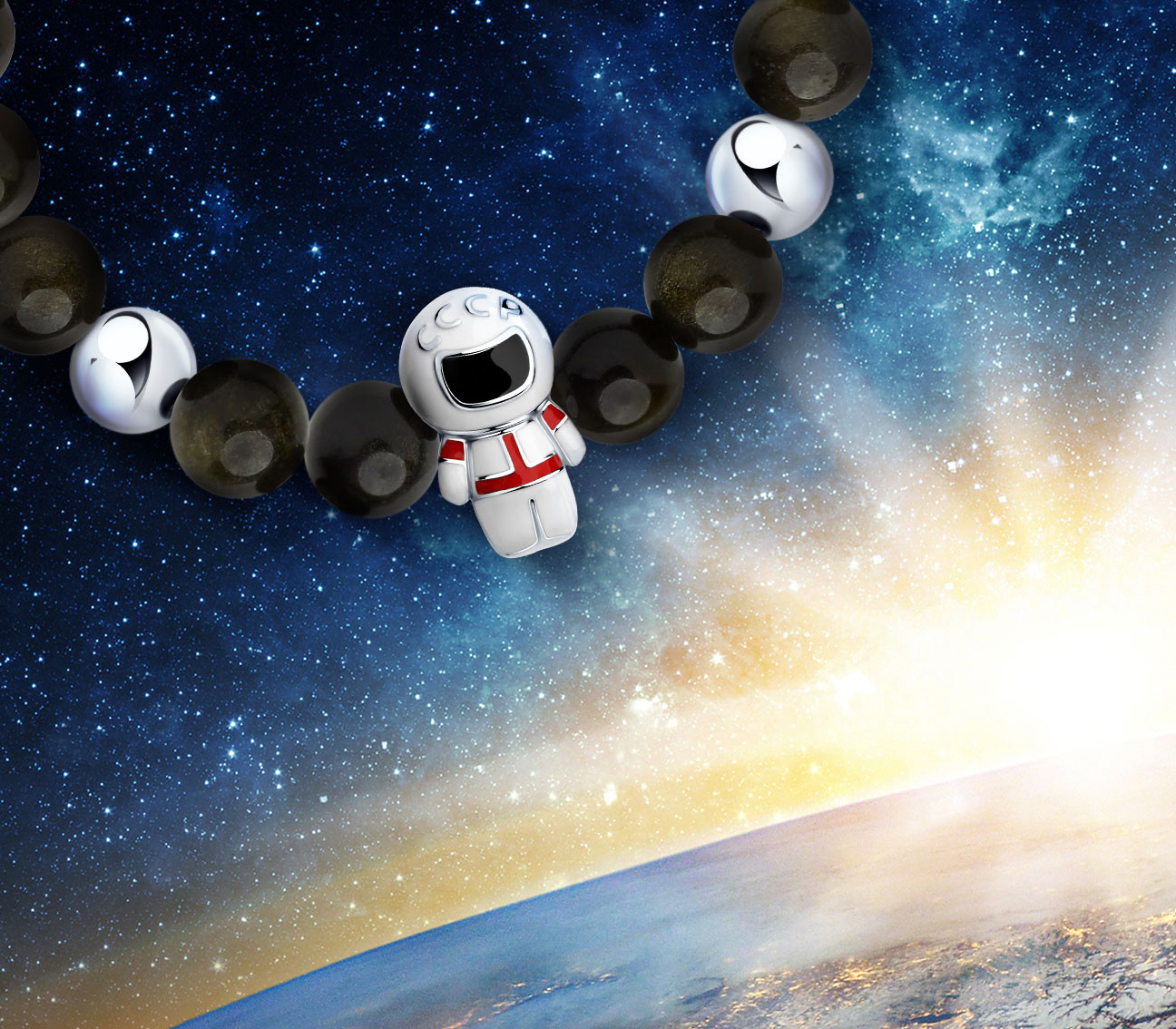
STONES FROM THE OUTER SPACE
We know for sure that aliens exist 👽 But you should not be afraid of them: although they consist of seemingly “formidable” metals and silicates, they have no purpose to harm us, and, having accidentally found themselves on our planet, even stay here forever. And sometimes they even want to be even closer to us - and become parts of unique jewelry.
Tektites
(from Greek τηκτός tēktós, "molten")

The age of these alien stones is about thirty thousand years. They say that Nizhny Novgorod pebbles are fragments of a comet that flies near our planet every 62 years. Perhaps in2058, jewelry collectors will get a new chance to replenish their stocks!
Moldavites
 Moldavite is a type of textite, but these “brothers in extraterrestrial intelligence” do not resemble each other: Moldavite, or vltavin, is more similar to melted bottle glass. They stone was named in honor of the place of its discovery - the Czech Vltava River (the German name of the river is Moldau). Scientists claim that fragments of Moldavites appeared in the vicinity of the river about 15 million years ago!
Moldavite is a type of textite, but these “brothers in extraterrestrial intelligence” do not resemble each other: Moldavite, or vltavin, is more similar to melted bottle glass. They stone was named in honor of the place of its discovery - the Czech Vltava River (the German name of the river is Moldau). Scientists claim that fragments of Moldavites appeared in the vicinity of the river about 15 million years ago!
In the hands of experienced cutters, this alien takes on a pleasant mint shade and, of course, they have already tried to make jewelry out of it. One can only guess about their truly cosmic value!
Palassites
 "Palassovo iron" was first found near Krasnoyarsk. Palassite, an incredibly beautiful meteorite fragment, is a unique combination of metal and stone - transparent silicate. The palassite, named after the German encyclopedist P.S. Palass, who described it in 1749, who served in Russia, contains of about 90% iron and 3 to 20% nickel. And the transparent "windows" in the structure of the stone are olivine inclusions. Curiously, terrestrial olivine contains much more calcium and nickel.
"Palassovo iron" was first found near Krasnoyarsk. Palassite, an incredibly beautiful meteorite fragment, is a unique combination of metal and stone - transparent silicate. The palassite, named after the German encyclopedist P.S. Palass, who described it in 1749, who served in Russia, contains of about 90% iron and 3 to 20% nickel. And the transparent "windows" in the structure of the stone are olivine inclusions. Curiously, terrestrial olivine contains much more calcium and nickel.
A couple of thousand dollars per gram - and now you are the owner of a truly precious jewelry with palassite stone, fragments of which can be found in almost any country in the world.
Libyan desert glass
 Another subspecies of textite was found in Libya (hence its name). The most famous theory of the origin of the heavenly nugget is that it was formed from heated sand after the impact of a comet. The second version - a comet or meteorite for some time “slowed down” in the atmosphere, and the mineral managed to melt before turning into a kind of glass of light yellow color.
Another subspecies of textite was found in Libya (hence its name). The most famous theory of the origin of the heavenly nugget is that it was formed from heated sand after the impact of a comet. The second version - a comet or meteorite for some time “slowed down” in the atmosphere, and the mineral managed to melt before turning into a kind of glass of light yellow color.
It is interesting that it was with this extraterrestrial “quartz” that none other than Pharaoh Tutankhamun crowned his medallion! Who knows, maybe it was a Libyan glass scarab that became for him a powerful talisman that bestows power
Gibeon
 The name of this meteorite comes from a small African town, where it was first discovered in 1836. The wreckage of a gibeyon scattered across the desert and it was relatively easy to find them - more than twenty-six tons of extraterrestrial metal in a century and a half can be considered a record. In appearance, gibeon is a massive nondescript piece of iron. Thanks to cobalt, nickel and rare metals in the composition, the mineral does not rust.
The name of this meteorite comes from a small African town, where it was first discovered in 1836. The wreckage of a gibeyon scattered across the desert and it was relatively easy to find them - more than twenty-six tons of extraterrestrial metal in a century and a half can be considered a record. In appearance, gibeon is a massive nondescript piece of iron. Thanks to cobalt, nickel and rare metals in the composition, the mineral does not rust.
Even the processed fragments of the gibeon are not particulary attractive, but, due to the special origin and respect for the age, they are still used to create jewelry. How old is the gibeon? Let's just say that our planet and the old man gibeon are the same age! ...
Would you like a piece of jewelry with a space stone in your collection? 🌠 Which one did you like the most?

Leave a comment